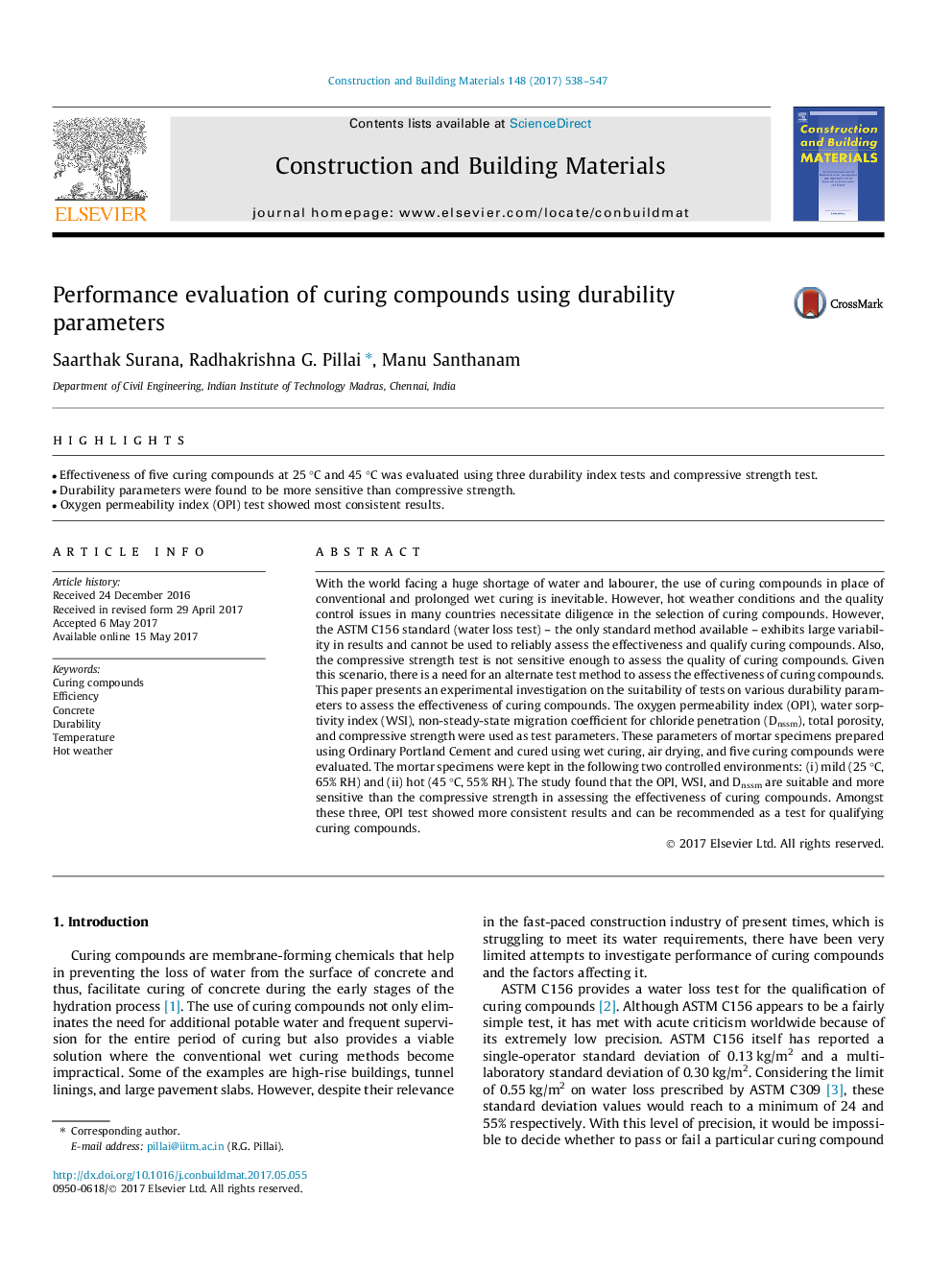| Article ID | Journal | Published Year | Pages | File Type |
|---|---|---|---|---|
| 6480371 | Construction and Building Materials | 2017 | 10 Pages |
Abstract
With the world facing a huge shortage of water and labourer, the use of curing compounds in place of conventional and prolonged wet curing is inevitable. However, hot weather conditions and the quality control issues in many countries necessitate diligence in the selection of curing compounds. However, the ASTM C156 standard (water loss test) - the only standard method available - exhibits large variability in results and cannot be used to reliably assess the effectiveness and qualify curing compounds. Also, the compressive strength test is not sensitive enough to assess the quality of curing compounds. Given this scenario, there is a need for an alternate test method to assess the effectiveness of curing compounds. This paper presents an experimental investigation on the suitability of tests on various durability parameters to assess the effectiveness of curing compounds. The oxygen permeability index (OPI), water sorptivity index (WSI), non-steady-state migration coefficient for chloride penetration (Dnssm), total porosity, and compressive strength were used as test parameters. These parameters of mortar specimens prepared using Ordinary Portland Cement and cured using wet curing, air drying, and five curing compounds were evaluated. The mortar specimens were kept in the following two controlled environments: (i) mild (25 °C, 65% RH) and (ii) hot (45 °C, 55% RH). The study found that the OPI, WSI, and Dnssm are suitable and more sensitive than the compressive strength in assessing the effectiveness of curing compounds. Amongst these three, OPI test showed more consistent results and can be recommended as a test for qualifying curing compounds.
Related Topics
Physical Sciences and Engineering
Engineering
Civil and Structural Engineering
Authors
Saarthak Surana, Radhakrishna G. Pillai, Manu Santhanam,
